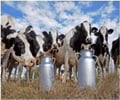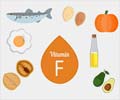Types of pasteurizations
Continuous Method
Continuous process method has several advantages over the vat method, the most important being time and energy saving.
For most continuous processing, a high temperature short time (HTST) pasteurizer is used. The milk is heated to a temperature of 72 C and held for 15 seconds and then cooled rapidly. The heat treatment is accomplished using a plate heat exchanger. This piece of equipment consists of a stack of corrugated stainless steel plates clamped together in a frame. There are several flow patterns that can be used. Gaskets are used to define the boundaries of the channels and to prevent leakage. The heating medium can be vacuum steam or hot water.
Cold raw milk at 4° C in a constant level tank is drawn into the regenerator section of pasteurizer. Here it is warmed to approximately 57° C - 68° C by heat given up by hot pasteurized milk flowing in a counter current direction on the opposite side of thin, stainless steel plates.
The raw milk, still under suction, passes through a positive displacement timing pump which delivers it under positive pressure through the rest of the HTST system.
The raw milk is forced through the heater section where hot water on opposite sides of the plates heat milk to a temperature of at least 72° C.
The milk, at pasteurization temperature and under pressure, flows through the holding tube where it is held for at least 16 sec. The maximum velocity is governed by the speed of the timing pump, diameter and length of the holding tube, and surface friction. After passing temperature sensors of an indicating thermometer and a recorder-controller at the end of the holding tube, milk passes into the flow diversion device (FDD). The FDD assumes a forward-flow position if the milk passes the recorder-controller at the preset cut-in temperature (>72° C). The FDD remains in normal position which is in diverted-flow if milk has not achieved preset cut-in temperature. The improperly heated milk flows through the diverted flow line of the FDD back to the raw milk constant level tank. Properly heated milk flows through the forward flow part of the FDD to the pasteurized milk regenerator section where it gives up heat to the raw product and in turn is cooled to approximately 32° C - 9°
The warm milk passes through the cooling section where it is cooled to 4° C or below by coolant on the opposite sides of the thin, stainless steel plates. The cold, pasteurized milk passes through a vacuum breaker at least 12 inches above the highest raw milk in the HTST system then on to storage tank filler for packaging.










